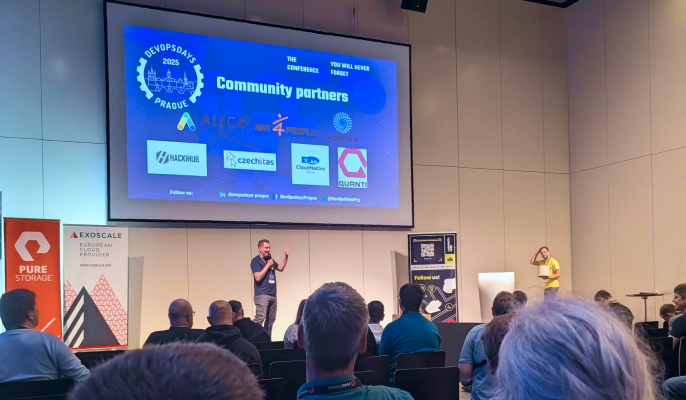The end of Magento 1 support in 2020 and the growing technological demands in e-commerce have driven many merchants to migrate to Magento 2.
However, this is far from a simple update. Migration is a complex project that affects every area of an online store’s operations—from data and design to SEO and infrastructure. Whether you're running a small shop or a robust ERP-connected solution, migration is a crucial step to stay competitive and set the stage for future growth.
In this article, we summarize the key challenges you might encounter and provide practical tips for overcoming them.
Data Transfer: More Than Just Export and Import
One of the biggest challenges is transferring data. It’s not just about products and customers—it includes orders, CMS pages, pricing rules, and revision history.
What makes it difficult:
- Huge volumes of data: Stores with thousands of items and millions of orders need precise mapping between M1 and M2 structures. The Magento Data Migration Tool can be a big help.
- Risk of loss or duplication: Even a small structural error can break your catalog or order flow.
- Preserving historical data: Many merchants face a dilemma—migrate all history or just the essentials? Some opt for a clean start, others need full historical continuity.
- User accounts and passwords: Customers shouldn’t have to create new accounts. Keeping login data intact is essential for a smooth transition and retaining customer trust.
-
Tip: Use the official Magento Data Migration Tool and always validate data in a testing environment. Delta migration (incremental changes) is also recommended by Adobe for large stores.
Extensions and Custom Features: Code That Needs a New Home
Magento 1 stores rarely run on a clean installation. They're typically extended with key modules, which must be reviewed and adapted or replaced during migration.
Watch out for:
- Architecture changes: Magento 2 uses a new dependency injection system and different frontend/backend structures.
- Module incompatibility: M1 extensions aren’t compatible with M2. Some features are now native in M2 (e.g., Page Builder, ElasticSearch), while others need to be rebuilt or replaced.
- Custom functions rewrite: Business-specific features (e.g., pricing logic or workflows) must be rewritten to meet new standards (Service Contracts, Repositories).
Tip: Make a list of all extensions and decide for each whether to replace, rewrite, or drop it entirely. Often, less is more.
Design and UX: When the Old Theme Doesn’t Fit
Design is often the first thing your customers notice. Migration is the perfect opportunity—and often a necessity—to redesign your store.
Main differences:
- Themes can’t be reused: Due to tech changes (Knockout.js, LESS, Require.js), old themes won’t carry over.
- Mobile-first design: Magento 2 is built to perform seamlessly on mobile and tablet. Adobe Commerce also supports a PWA approach.
- Page Builder: Included from version 2.3, this tool allows non-developers to build and edit pages easily.
Tip: Treat migration as a chance to modernize your design and UX. Base redesigns on real data from heatmaps, A/B testing, or user interviews. UX isn’t just design—it’s the experience.
You can also consider alternative visual editors like Goomento, which offer more features than the native Page Builder. Their intuitive interfaces and modern outputs are ideal for teams wanting more creative freedom without coding.
SEO: The Value You Don’t Want to Lose
Losing organic traffic is one of the biggest fears when migrating—and rightly so. If technical details are missed, search rankings can drop, affecting your bottom line.
Risks to visibility:
- URL structure changes: M2 generates URLs differently. Set up 301 redirects for all old URLs (products, categories, CMS pages).
- Metadata loss: H1s, meta tags, and Open Graph data must be preserved—preferably via automation.
- Slower loading: M2 promises better performance, but poor implementation can slow your site and hurt rankings.
- Internal links: Store structure changes can break internal linking.
Tip: Run a full SEO audit before launch and monitor performance in Google Search Console afterward. If you lose positions, act fast.
Downtime and Go-Live Planning: The Critical Moment
How you handle launch day makes a big impression—and can affect how many customers come back.
What helps:
- Phased migration: Gradually migrating data can minimize disruptions.
- Shadow mode: Test in a staging environment identical to the live setup.
- Go-live plan: Clearly define team roles, timing, and rollback scenarios. A detailed plan reduces stress and costs.
Tip: Don’t skip testing. Include user acceptance testing (UAT) and test all integrations (payments, ERP, warehouse, shipping).
Costs and Time: Reality Without Rose-Tinted Glasses
Many projects fail because expectations don’t match reality. Magento 2 migration isn’t cheap, but with the right partner, it pays off long-term.
Don’t forget:
- Hidden costs: Beyond development and design, consider licensing (Adobe Commerce), hosting, support, and training.
- Time buffer: Migration takes weeks or months, depending on data volume, customization, and testing. Unexpected issues can delay timelines and increase budgets.
- Maintenance and growth: Magento 2 requires ongoing updates and optimization, especially with advanced modules.
Tip: Work with an experienced partner who can estimate effort based on previous projects.
Migration Is a Challenge, but Also a Huge Opportunity
Migrating from Magento 1 to Magento 2 isn’t simple. Our experience shows it’s a path filled with challenges related to data, code, design, and SEO. It takes careful planning, deep technical know-how, and significant time and financial investment. But with solid preparation, realistic expectations, and the right partner who understands both platforms, these hurdles can be overcome.
The end result is a modern, high-performing, and scalable online store on Magento 2 / Adobe Commerce—ready for future growth and innovation.


.svg)







